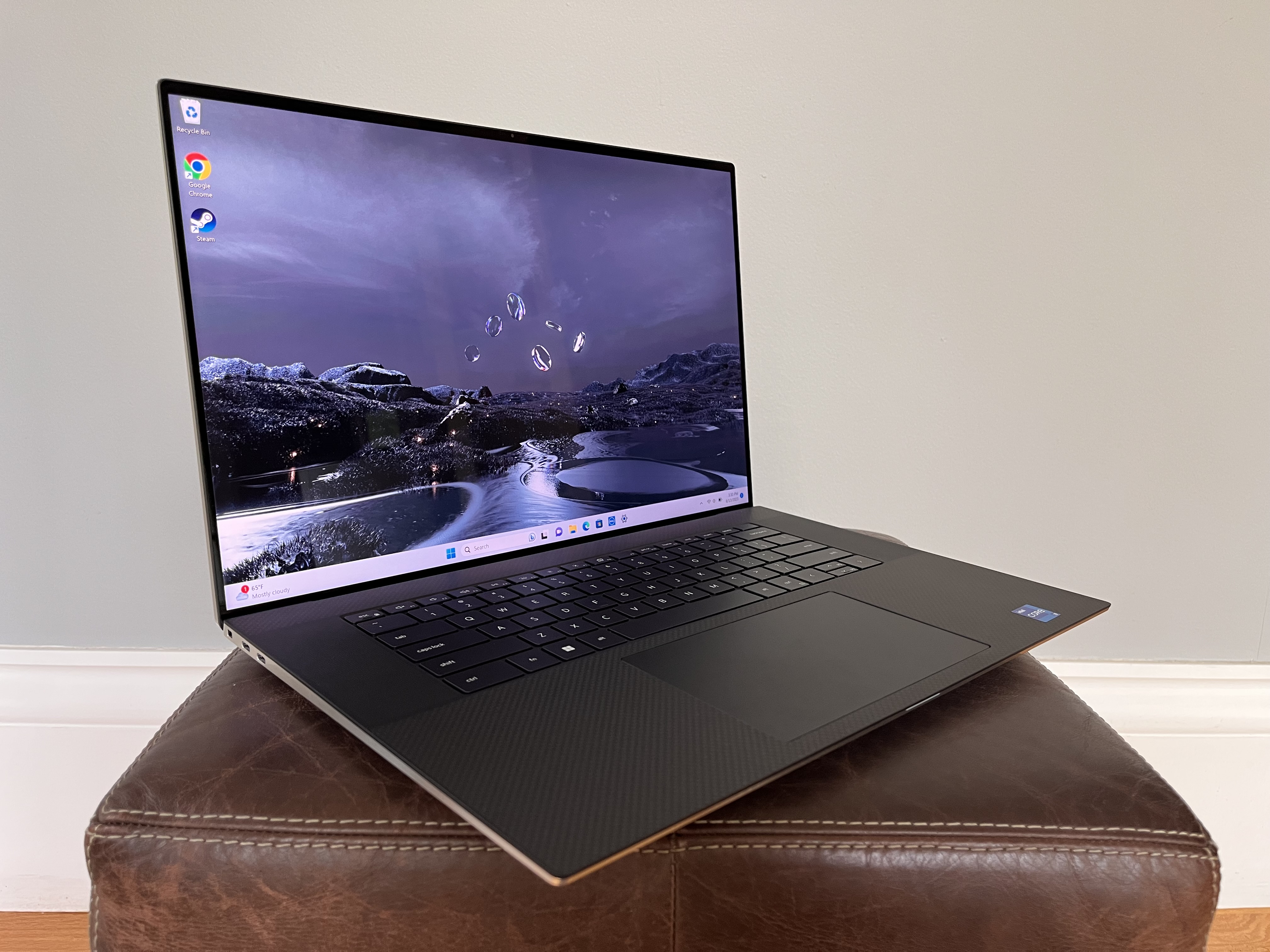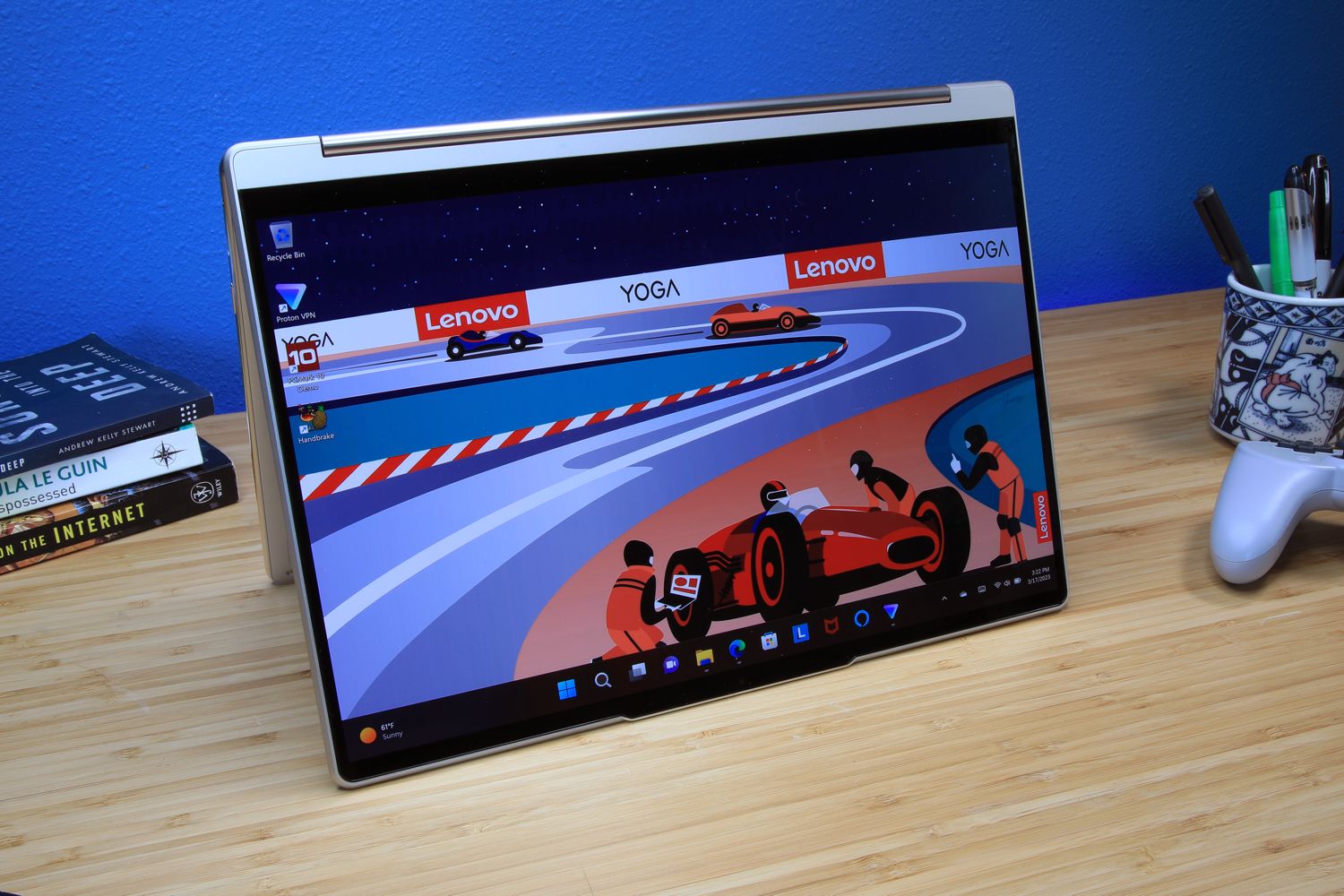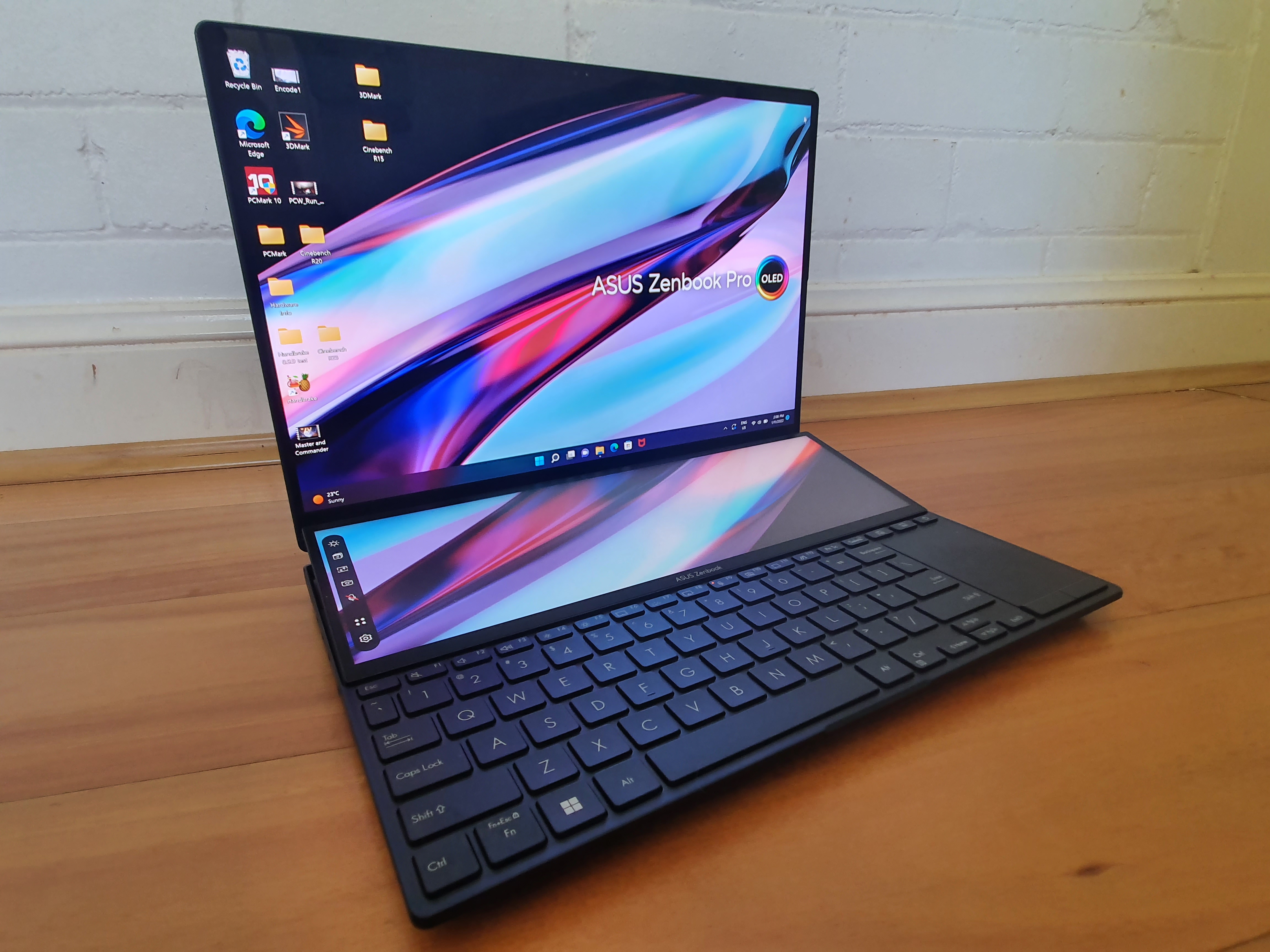Whether you’re a content creator or a business professional, if you’re looking for a laptop with a great touchscreen, you’ve come to the right place. Back in the days of old, it used to be something of an insurmountable task to pinpoint a laptop with a decent touchscreen. Well, those days are long past. However, with so many options out there, it can still be rather daunting. If you’re not sure where to begin, don’t sweat it. The team here at PCWorld curated a list of the best touchscreen laptops you can buy right now. How can we be so confident in our picks? We’ve had hands-on experience with every single one of them. Read on to learn more.
[The best laptops: Premium laptops, budget laptops, 2-in-1s, and more]
Updated 8/3/2023: To include the Dell XPS 17 (2023) as our new choice for best for content creators. Read more about this great new pick in our summary below.
Dell XPS 17 9730 – Best for content creators

Pros
- Expansive 17-inch 16:10 display
- Thin chassis
- Incredible battery life
Cons
- High price without OLED display
- Low-wattage GPU limits 3D performance
- Low-res 720p webcam
The Dell XPS 17 9730 is a fantastic option for content creators because of its huge 17-inch display and 16:10 aspect ratio. Not only does the XPS 17 come with a touchscreen panel, but it also has a 10-bit color depth and a 3840×2400 resolution. The laptop only weighs a little over five pounds, which isn’t bad considering how much Dell managed to pack into this machine. It’s full of excellent performance features such as an Intel 13th-gen Core i7-13700H processor and an Nvidia GeForce RTX 4070 GPU, which should make quick work of any video or photo editing. It also comes with 1TB of SSD storage so you won’t have to run out and buy an external hard drive anytime soon.
HP Chromebook x2 11 da0023dx – Best convertible Chromebook

Pros
- Gorgeous 2K touchscreen
- Solid performance
- Excellent battery life
- Robust design
Cons
- Trackpad is too sensitive at times
- Light on ports
If you’re looking for an affordable 2-in-1, the HP Chromebook x2 11 tics all the right boxes. It’s lightweight and portable, and the detachable keyboard and kickstand connect cleanly to the aluminum tablet. But the real star of the show here is the 11-inch 1440p touchscreen. In our review, the tester said the display was “just plain lovely.” Colors really pop and the touchscreen is super responsive and fluid. Plus, a wireless USI pen comes in the box. This is a great option for those who like to take notes or doodle.
Lenovo Yoga 9i Gen 8 – Best 2-in-1

Pros
- Attractive, thin design
- Excellent OLED display
- All USB-C ports support display, power
- Touchscreen with bundled active pen
Cons
- Underwhelming graphics performance
- Only one USB-A port
- More expensive than 2022 model
Lenovo seems to always impress with its flagship Yoga 2-in-1 laptops and the latest Gen 8 version is no exception. With an updated 13th-gen Intel processor and a brilliant OLED display, Lenovo’s new Yoga 9i surpasses the high bar set by previous versions. Under the hood you’ll find the aforementioned Core i7 processor, Intel Iris Xe integrated graphics, 16GB of DDR5 RAM, and a 512GB SSD. All of those performance features are brilliantly fit into a svelte and sleekly designed laptop just over half an inch thick and weighing in around 3 pounds. In addition, it packs a 1080p webcam and good connectivity. But where the latest version really stands out is in its inclusion of a brilliant 2880×1880 OLED touchscreen display that even comes bundled with a stylus pen.
It’s a tad bit more expensive than its predecessor, but that’s to be expected with the upgrade to performance and the switch to an OLED display. Despite the higher price, the feature upgrades it brings to the table still make it good value for the money. Anyone who is looking to invest in a 2-in-1 at this time should put the Yoga 9i at the top of their list.
Dell Inspiron 16 – Best battery life

Pros
- Roomy 16-inch 16:10 display
- Long battery life
- Competitive application performance
- Comfortable keyboard and huge touchpad
- Quad speakers pump up the jams
Cons
- Lone GPU upgrade is lackluster
- Can’t go bigger than 512GB SSD
- Large screen can feel awkward in tablet mode
Need a touchscreen laptop that’ll run as long as the Energizer Bunny? Look no further than the Dell Inspiron 16. When we ran our battery benchmark, which runs a laptop through a series of tasks and videos until the battery dies, the Inspiron 16 lasted a marathon 16.5 hours on a single charge. That’s almost two full work days—or a really long Netflix binge. That large battery does make it a bit heavy, weighing in at 4.7 pounds, which is a more than some other 2-in-1s. The specs aren’t bad either, sporting an Intel Core i7-1260P CPU, Intel Iris Xe graphics, 16GB of RAM, and 512GB of SSD storage. That’s powerful enough for multitasking, media editing, and more. The 16-inch display has a resolution of 1920×1080 and it also comes with a surprisingly robust quad speaker system. For ports, you’re getting two USB Type-C, one USB-A 3.2 Gen 1, 1 HDMI, one SD card reader, and one 3.5mm audio jack.
Asus Zenbook Pro 14 Duo OLED – Best dual display

Pros
- Stunning primary display and easy to see secondary display
- Excellent I/O options and wireless connectivity
- CPU / GPU power meets the needs of content creators
Cons
- The battery life is lacking for a productivity laptop
- The trackpad is small and awkwardly placed
- Rear orientated ports can be hard to reach
If you’re look for something a bit different, look no further than the Asus Zenbook Pro 14. It packs decent firepower with a Core i7 processor, RTX 3050 graphics, 16GB of DDR5 RAM, and a fast 1TB NVMe SSD. It also has a 14.5-inch 4K touch touch OLED main panel. But the truly intriguing feature is the secondary 12.7-inch 2880×864 screen located right above the keyboard. It is recognized as a second monitor and you can use it with all kinds of helpful tasks, such as setting it up as a trackpad or displaying a panel of touch controls for some Adobe apps. The only real drawback is the mediocre battery life, which means you’ll likely need to carry around a charging cable while on the go. Despite this, the Zenbook Pro 14 Duo OLED is a well-tuned productivity machine complete with two high-quality and useful displays.
How we tested
The PCWorld team puts each and every Windows laptop through a series of benchmarks that test GPU and CPU performance, battery life, and so on. The idea is to push the laptop to its limits and then compare it against others we’ve tested. Chromebooks, on the other hand, go through a series of web-based tests. It wouldn’t be fair or possible to run the same kinds of tests on a Chromebook, as they’re Chrome OS-based machines. Below, you’ll find a breakdown of each test and the reasons why we run them.
Windows laptops
- PCMark 10: PCMark 10 is how we determine how well the laptop handles lighter tasks like web browsing, word processing, spreadsheets, and so on.
- HandBrake: HandBrake is more intensive than PCMark 10. It basically measures how long a laptop’s CPU takes to encode a beefy 30GB file.
- Cinebench: Cinebench is a brief stress test of the CPU cores. It does this by rendering a 2D scene over a short period of time.
- 3DMark: 3DMark checks if 3D performance remains consistent over time by running graphic-intensive clips.
- Video rundown test: To gauge battery life, we loop a 4K video using Windows 10’s Movies & TV app until the laptop dies.
Chromebooks
- CrXPRT 2: The CrXPRT 2 benchmark tests a Chromebook’s battery life.
- Speedometer 2.0: This test determines a Chromebook’s web browser performance. It simulates this by adding, completing, and removing a to-do list.
- Basemark Web 3.0: This benchmark gauges how well a Chromebook can handle web-based applications.
- Kraken 1.1: Kraken 1.1 is a JavaScript performance benchmark.
- Jetstream 2: Jetstream 2 is a combination of WebAssembly and JavaScript benchmarks. This is a way to gauge how well a Chromebook runs advanced workloads.
What to look for in a touchscreen laptop
Ah, here we are at the billion dollar question. Do you spring for a basic Chromebook or go for a Windows laptop with more features? Well, it really depends on your personal lifestyle and what you plan on using your laptop for. For example, Chromebooks are a great low cost option for those who just want the basics. I use a Chromebook as my primary work laptop, as it has everything I need for both editing and writing. If you travel a bunch for work, it’s probably a good idea to invest in a laptop with solid battery life. If you’re still unsure, don’t sweat it. I’ve put together a list of quick tips below.
- Laptop type: The first question you should ask yourself is what kind of laptop you’re looking for. There’s traditional clamshells, 2-in-1’s, Chromebooks, and much more. The displays on convertible laptops (aka 2-in-1’s), for example, can swing around 360 degrees. This allows you to use the laptop like a tablet. They can also be propped up like a tent for viewing movies or participating in video calls. Chromebooks, on the other hand, exclusively run Google’s web-focused Chrome OS and are generally used for everyday tasks. All you need is a Gmail account and boom, you’re in. There are pros and cons to each of them. Chromebooks are affordable and generally have good battery life whereas convertibles are normally lightweight and portable.
- CPU: Intel processors are available in Core i3, Core i5, Core i7, and Core i9. The higher the number, the more powerful the CPU. (AMD’s rival Ryzen processors use a similar naming scheme.) If you don’t need a ton of power, Intel Core i5 processors are your best bet, as they offer good performance at a decent price. Basic office and web work gets along just fine on a Core i3, however. A Core i7 is more suited to gaming and more intense work than everyday tasks.
- Graphics: You’ll want a discrete graphics card for hardcore gaming or editing videos. It’s separate from the processor, so you can expect higher performance out of it. Integrated graphics, on the other hand, are attached to the CPU and uses less power as a result. This is perfectly fine for everyday tasks, especially if you’re not doing anything that’s graphics-intensive.
- Display size: If you’re a video editor or someone who does a lot of multimedia work, you’ll want a display that’s anywhere from 15- to 17-inches. The sweet spot is really anywhere from 13- to 14-inches, though. The bigger the display, the heavier your laptop is going to be. A 13- or 14-inch display is the best in terms of portability and value.
- Battery life: If you plan on taking your laptop anywhere with you, aim for something that can last 10 to 12 hours on a single charge. That’s more than a full work day, so it should theoretically get you through long flights or a day of classes. Obviously, more is always better. Just know that the bigger the battery, the heavier the laptop. Read our round-up of the best laptop chargers.
- Price: The price really depends on your budget. If you’re strapped for cash (been there, trust me), go for a Chromebook or an entry-level business laptop. These laptops are good choices for students or young professionals. If you can afford to spend more, the versatility of a 2-in-1 laptop is really worth it.
- Ports: A wide array of ports is always a plus in my book, as it eliminates the need for an adapter. I’d recommend a laptop that has both USB-C and USB-A. An HDMI port is good, too. This is especially useful for when you want to hook up to an external monitor.


